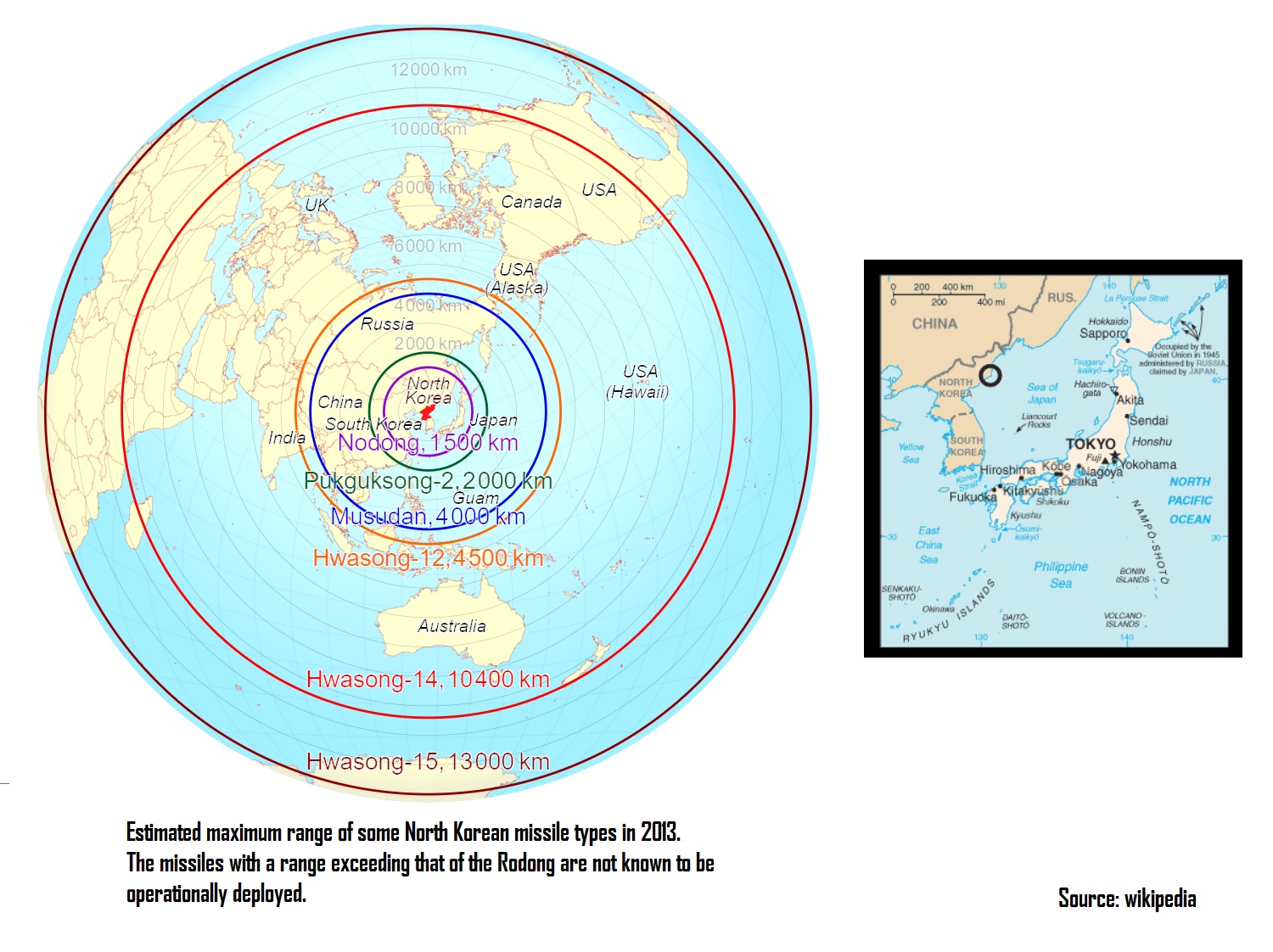|
----------------

The Hwasong-17 (Korean: is a North Korean two-stage ICBM, first unveiled on 10 October 2020, the 75th anniversary of the founding of the Workers' Party of Korea (WPK) parade. This missile is the latest iteration of North Korea's intercontinental ballistic missile (ICBM) program, and it has the greatest perceived range out North Korea's missile arsenal (15,000 km+). It had its maiden flight on 24 March 2022.
At the Self-Defence-2021 exhibition, the missile was shown labeled as the Hwasong-17
-----------------------------------

Test launches of the Hwasong-17 were carried out first on 26 February 2022, and again on 4 March. North Korea did not publicize news of the launches, with INDOPACOM revealing them later. The United States believed the tests were not intended to demonstrate the ICBM's range but conduct early evaluations of its capabilities. North Korea publicly claimed the launches were intended to test components of a reconnaissance satellite at operational altitudes without disclosing they had been lofted by the new ICBM. It is possible the launches were done to test both satellite components and the ICBM, but only the former was admitted to limit potential international criticism. Missile expert Jeffrey Lewis also raised the possibility that these were launches of the post-boost vehicle for the second stage of the Hwasong-17. A missile launch was attempted on 16 March 2022, but it was a failure. It is suspected that it was a Hwasong-17 test, but was not acknowledged by North Korea due to the unsuccessful launch.
A test launch was carried out and then officially confirmed on 24 March 2022, which resulted in a complete technical success which broke many records for North Korea, for example regarding height and flight time. The footage of the launch may have been doctored, with missile analysts being unable to confirm that the missile that was launched on 24 March was a Hwasong-17, due to inconsistencies with objects in the background of the launch, which matched to satellite imagery on an earlier date than 24 March. Two shots of the observation bus that Kim Jong-un was in appeared to be taken in different locations and grass that was burnt in a controlled burn appeared to be unburnt on Korean Central Television footage. South Korean intelligence alleges that the missile launched on 24 March was likely an improved and modified Hwasong-15, though NK News also stated that there may be other reasons for using old footage, such as a camera failure.
Lofted trajectories of Hwasong-14/15/17


North Korea announces successful ICBM test. NK News.org (5 July 2017). Apogee of 2,802 km (1,741 mi), landing 933 km (580 mi) North Korea announces successful ICBM test. NK News.org (28 July 2017). Apogee of 3,724.9 km (2,314.5 mi), landing 998 km (620 mi) North Korea announces first test of Hwasong-15 ICBM. NK News.org (November 29, 2017). “soaring to the highest altitude of 4475 km” and flying 950 km Striking Demonstration of Great Military Muscle of Juche Korea. KCNA.kp (March 25, 2022). "altitude of 6,248.5 km and flew a distance of 1,090 km"
Trajectories of Hwasong-14. Very high angle lofted trajectory. First flight: Second flight: First flight of Hwasong-15:
24 March 2022 Sil-li missile facility, near Pyongyang International Airport. Signs of an ICBM or satellite launch were allegedly detected by USA.[8] Success First announced test of the Hwasong-17, with an apogee of 6248.5 km and a horizontal displacement of 1090 km, with a total flight time of 4052 seconds.
Supreme leader Kim Jong-un supervised the launch, and celebrated with soldiers and researchers from the Academy of National Defense Science.
The launch could have instead been an extended range Hwasong-15, with video footage of the launch being inconsistent with the conditions on 24 March.
|